Travel

Daniel Allen joins a small expedition ship exploring the Arctic waters and remote wilderness of East Greenland and Svalbard
Svalbard. Two syllables redolent of Viking mythology and the unforgiving wildness of the High Arctic. With a name thought to be derived from the Norse for ‘cold rim’, this frigid cluster of islands is located on the remotest edge of Europe – a mere 1,300 kilometres from the North Pole. It’s almost 1am, and after a three-hour flight from Oslo, Longyearbyen Airport seems a very long way from anywhere. A stuffed polar bear in the arrivals hall reinforces that this is a land where both wildlife and weather still dictate the routines of human existence.
I collect my belongings from the baggage carousel and jump into the back of a waiting van for the short drive into downtown Longyearbyen, Svalbard’s diminutive, de facto capital. This also happens to be the world’s northernmost substantial community, with a fluctuating population of around 2,500 residents – slightly less than the polar bear population in the archipelago and adjacent Barents Sea. I’m here to join a cruise with AE Expeditions, an Australian company specialising in small-group, expedition-style travel to polar regions and other wild and remote places. Almost every other passenger is already tucked up in bed across Longyearbyen’s collection of hotels and guest houses, blinds drawn to repel the midnight sun’s golden glow.
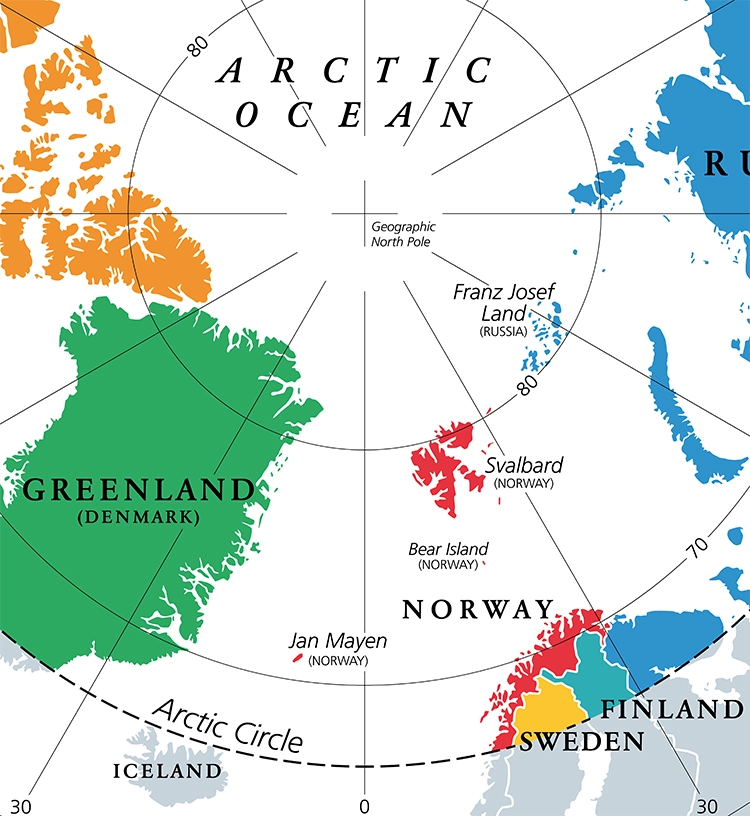
Over the next 15 days, we will explore the shores and offshore waters of Svalbard before cruising southwestward to the jagged, glacier-laden coast of East Greenland. Transporting us on our voyage will be the Sylvia Earle, a recently launched, state-of-the-art ship named after renowned American marine biologist, oceanographer and explorer Dr Sylvia Earle. With an onboard science laboratory, carbon-neutral construction, and a nature-inspired, inverted bow that reduces fuel consumption, this is a vessel that takes eco-conscious travel to the next level.
For most Sylvia Earle passengers, Svalbard’s preeminent attraction are the polar bears. Besides Canada, Greenland, Russia and Alaska, the archipelago is the only other place on the planet where the world’s largest carnivorous land animal roams freely. During the eternally sunlit summer months, when bears migrate onto land as the sea ice melts, this is one of the best places to witness this iconic Arctic predator. The following day, veteran expedition leader Howard Whelan welcomes everyone in the Sylvia Earle’s impressive lecture theatre. This is followed by a presentation on polar bears by firearms manager Jeff Nagel. We learn the critical importance of respecting the bears in their environment, which essentially means letting the expedition’s scouting teams do their job, and avoiding a terrestrial encounter at all costs.
The following days are spent cruising around the top of Spitsbergen –Svalbard’s largest island. The air, land and sea all teem with birdlife – from puffins, guillemots and little auks to glaucous gulls, eider ducks and Arctic terns – all taking advantage of the ephemeral bounty of summer. As part of the onboard citizen-science programme, which provides invaluable data to the global scientific community, aspiring ornithologists join expedition team member John Kirkwood, a marine biologist, for intensive bird counting.
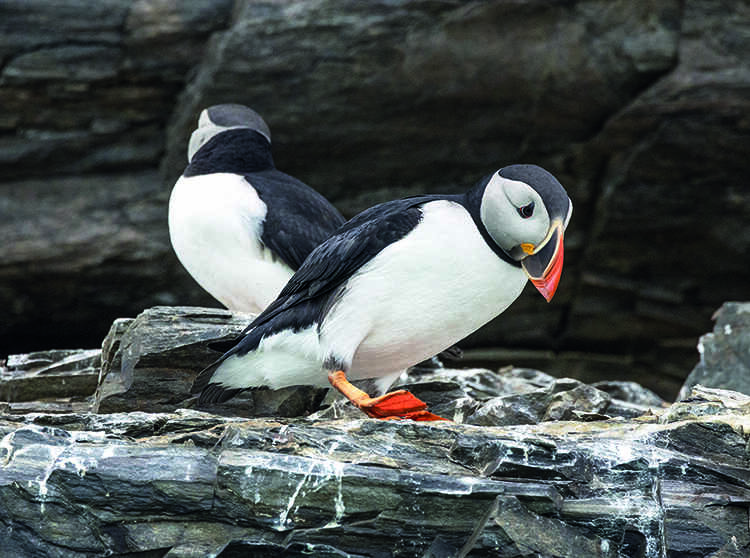
By Day Four, the Sylvia Earle has navigated the 145-kilometre-long Hinlopen Strait, which divides the islands of Spitsbergen and Nordaustlandet. We pass the frozen ramparts and spectacular glacial waterfalls of Bråsvellbreen – the longest ice cliff in the Northern Hemisphere – as Nordaustlandet’s sprawling Austfonna ice cap debouches into the sea. Leaving Nordaustlandet behind, we arrive at the island of Edgøya, named after 17th-century English whaler Thomas Edge, who contentiously laid claim to its discovery in 1616.
The British and Dutch began whaling in the waters of Svalbard in the early 1600s. The centuries-long whaling boom that ensued is a tale of rugged, adventurous men with dreams of wealth and dangerous lives filled with blubber and oil. By 1850, their joint efforts had completely eradicated the highly prized bowhead whale in the waters around Svalbard. Atlantic walruses were also hunted, first by English and Dutch whalers and later by Russian and Norwegian fur hunters. By the time such hunting came to an end at the end of the 19th century, walruses had almost disappeared, too. Thankfully, Svalbard’s now-protected walrus population is making a comeback, although bowhead whales remain a rarity.
By the morning of the fifth day, the Sylvia Earle is moored offshore from Diskobukta (Disko Bay), on the west coast of Edgøya. A long Zodiac ride across calm waters transports us to a gently sloping shore, where a half-ruined hut used by whalers and trappers is surrounded by lichen-encrusted whale bones and clumps of delicate, lemon-white Svalbard poppies.
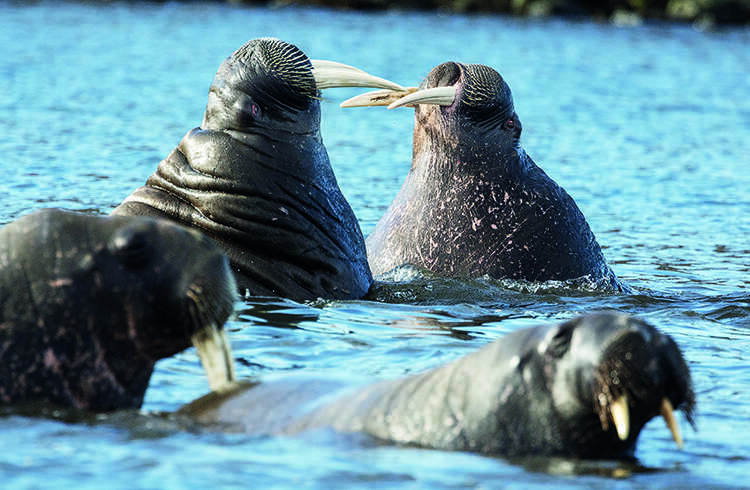
Jeff Nagel leads us on a short trek towards a canyon in some nearby cliffs, where tens of thousands of black-legged kittiwakes nest on every square inch of horizontal rock face. Their piercing cries reach a deafening crescendo as the walls of the canyon rise up on each side, while the air is filled with the acidic reek of ammonia. Making its way intently down the cliff-face, an intrepid Arctic fox approaches to within several metres, its rust-red summer pelt contrasting sharply with the guano-stained rocks. Finding the next meal is clearly more of a priority than avoiding a small party of camera-wielding wildlife enthusiasts.
‘This seabird colony is an open buffet for foxes,’ explains Nagel. ‘They make their dens here in the summer, rearing their cubs and fattening themselves upon birds and eggs in preparation for the lean winter months.’
Today is turning out to be the best wildlife-watching day of the trip. At Russebukta (Russian’s Bay), located farther south on Edgøya’s western coast, we take to the Zodiacs once more under a cloudless, blue sky. The sounds and smells of an Atlantic walrus haul-out carry across the water, scores of these hulking, cinnamon-coloured pinnipeds bellowing, barking, grunting and belching as they watch us approach. Giant, heavily whiskered walrus heads begin to pop up a short distance from the boats, as waterborne members of the colony inspect our flotilla with bloodshot eyes.
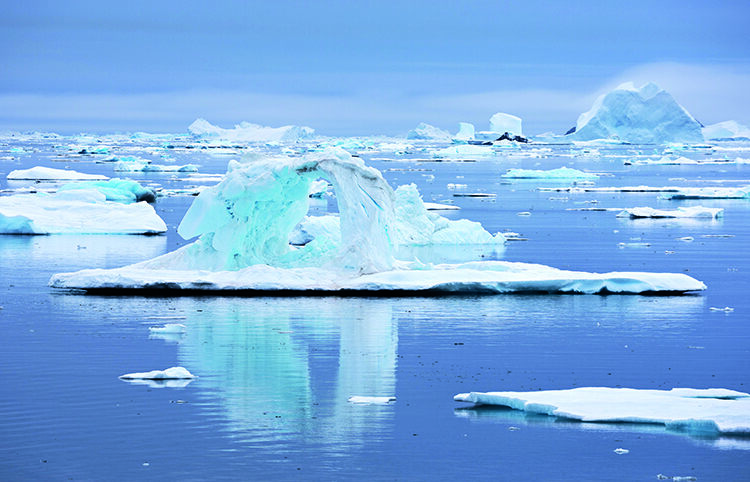
The radio crackles as a report of a polar bear in the water comes in, and we race towards a small, flat-topped islet intime to see a huge male ambling slowly across the skyline, cream-coloured fur still dripping from its recent swim. The bear raises its massive head, sniffing the air as it regards the bobbing Zodiacs with curiosity. Despite the distance, I can feel my heartbeat quicken as humans and bear eye each other across the swell for what seems like an adrenaline-fuelled eternity. The bear eventually loses interest, turns its back and disappears from view. As we set a course southwest across the Greenland Sea that evening, our thrilling ursine encounter dominates the dinner table conversation. Svalbard had saved its best till last.
By the ninth day of the voyage, excitement is building again as we wait for our first glimpse of the Greenland coast. East Greenland, stretching from Kap Farvel in the south to Kap Morris Jesup in the north, is an immense land of water, ice and rock, washed in ethereal polar light. Not many places on Earth are as remote and pristine as this, with a scattering of sparsely populated settlements dotting the vast landscape.
‘Superlatives tend to get thrown around when describing wilderness destinations like Greenland, but East Greenland is a truly remote place that lives up to everything attributed to it,’ Jos Dewing, AE Expeditions’ managing director EMEA, had told me by email before the trip. ‘The dramatic coastline is off limits because of the ice for all but two or three months of the year, so the sense of inaccessibility adds to the thrill of visiting by small expedition ship.’
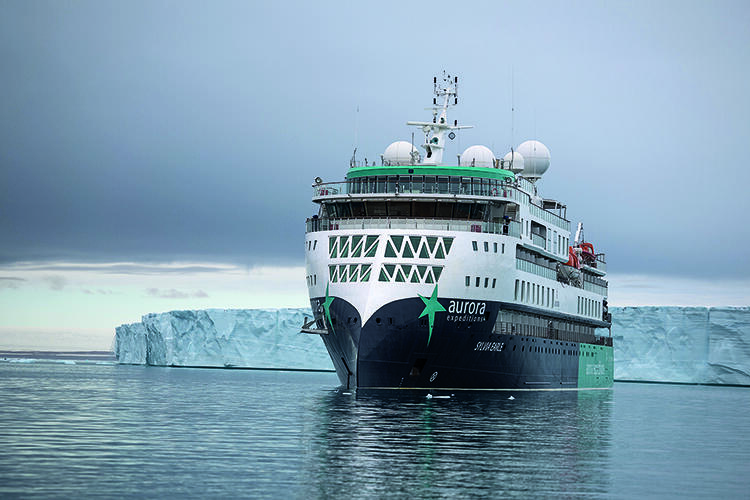
As a thick blanket of fog begins to lift, the Sylvia Earle noses its way through a field of growlers and bergy bits towards Nansen Fjord – named after Norway’s great polar explorer Fridtjof Nansen. An otherworldly tableau of soaring peaks, phantasmal icebergs of all dimensions, and sweeping, heavily fissured glacier fronts in shades of blue and white draw an ever-increasing crowd of passengers to the outer decks.
With the entrance to Nansen Fjord choked with monolithic bergs, the day’s exploration plan changes rapidly – as it often does on an Arctic voyage. The expedition leaders find a small cove for landing, and a short Zodiac ride later, I’m standing on a sandy beach looking at polar bear tracks leading off into the distance. Bears in Greenland are more elusive than those in Svalbard, with their tendency to range over vast distances in search of food earning them the name pihoqahiakor – ‘ever-wandering ones’ in Inuit. Today, a line of huge paw prints is the closest we come to seeing this itinerant carnivore.
Over the following days, the scenery continues to ratchet up the sense of spectacle, as Zodiac cruises around Kivioq Fjord and Hutchison Glacier showcase the primordial beauty and humbling power of nature at high latitudes. The mirror-like waters we navigate are frequently scattered with shards of icy crystals, transformed into shimmering sequins by the Arctic sun. As we set a course for Reykjavik – our final destination – the Sylvia Earle passes a gigantic tabular iceberg, its sculpted sides painted gold and amber by the oblique evening sunlight. It turns out to be the last ice we see before the end of the trip – a fitting tribute to the incredible sights of the last 15 days.
EXPLORE Svalbard and East Greenland
READ
Lands that Hold One Spellbound: A Story of East Greenland by Spencer Apollonio is one of just a handful of books devoted to East Greenland, providing the perfect introduction to the landscape and culture of the region. Covering indigenous settlement over four millennia, as well as European exploration from the Norse period through to recent years, this is an exciting tale of great mountains, stranded ships, dramatic sledge journeys and much more
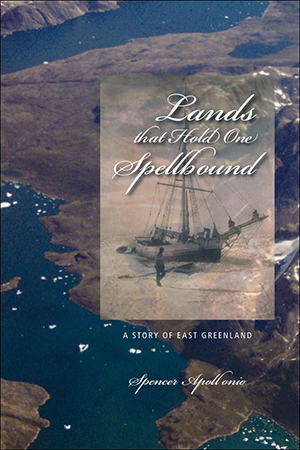
LONGYEARBYEN’S MUSEUMS
The award-winning Svalbard Museum offers visitors a journey through the archipelago’s history, from the first whalers to modern-day mining, research and tourism. The displays feature the living conditions of whalers, trappers, seal and walrus hunters and, more recently, miners. Also worth visiting is the North Pole Expedition Museum, which recounts the efforts made to reach the North Pole at the turn of the last century, mainly with airships, but also with skis, dog sledges, and boats. There is also an internationally vital seed bank.
PHOTOGRAPHY
With their jaw-dropping scenery and captivating wildlife, both Svalbard and East Greenland are a photographer’s dream. There are onboard photography guides and special guest photographers providing lectures, presentations, and general advice. Bring long lenses and plenty of memory cards.
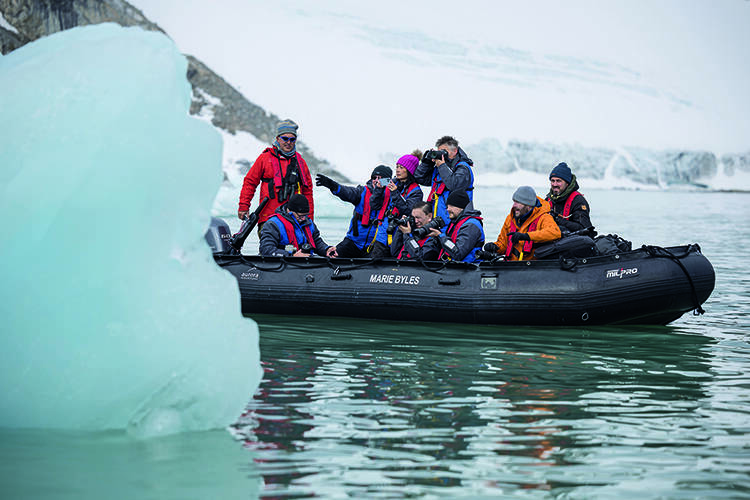
EXPERIENCE JAN MAYEN
Named after a Dutch whaling captain who supposedly discovered it in 1614, Jan Mayen is a 55-kilometre-long volcanic island set in the North Atlantic Ocean, halfway between Iceland and Svalbard. Populated by a small number of Norwegian military personnel, it’s dominated by the 2,300-metre-high Mount Beerenberg, the world’s most northerly active volcano. Travellers stopping by on a cruise will be awed by the austere, forbidding landscape, which is frequently shrouded in fog. Wildlife includes fulmars, puffins, eider ducks and harp seals.
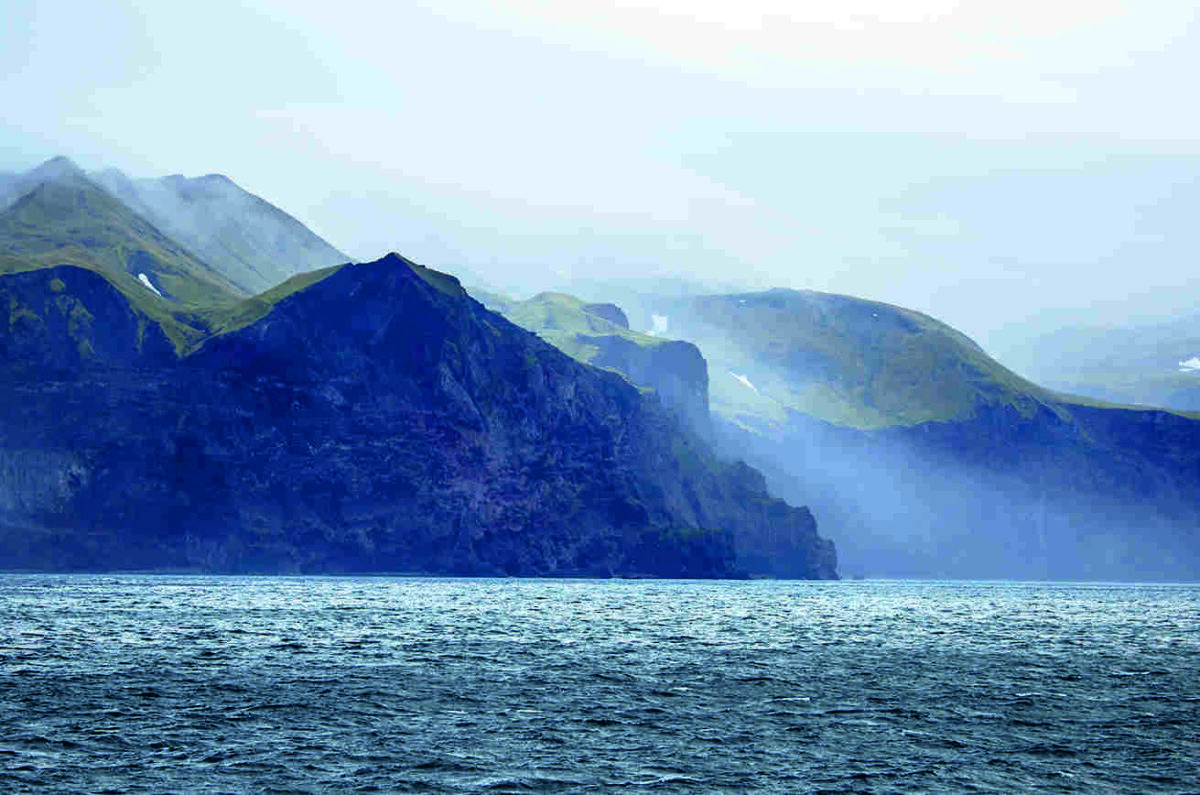
POLAR BEARS AND CLIMATE
Polar bears across the Arctic have been protected for more than 50 years. Protection efforts have been a conservation success story: from a population estimated at about 12,000 bears in the late 1960s, numbers have almost tripled to just over 32,000 in 2023. Despite Svalbard being the most rapidly warming part of the planet (its glaciers have lost 30 per cent of their volume since 1936), there is currently still enough ice in the spring for the bears to hunt successfully. There is also growing evidence that bears are evolving their hunting practices – targeting reindeer as well as seals.
KAYAKING
Sea kayaking is a unique way to experience the sea ice, fjords, glaciers and wildlife of Svalbard and East Greenland – kayakers can explore areas that are inaccessible to larger vessels as they navigate silently and unobtrusively across the water. The Sylvia Earle runs small groups of kayakers led by experienced guides. Some previous kayaking experience is required.
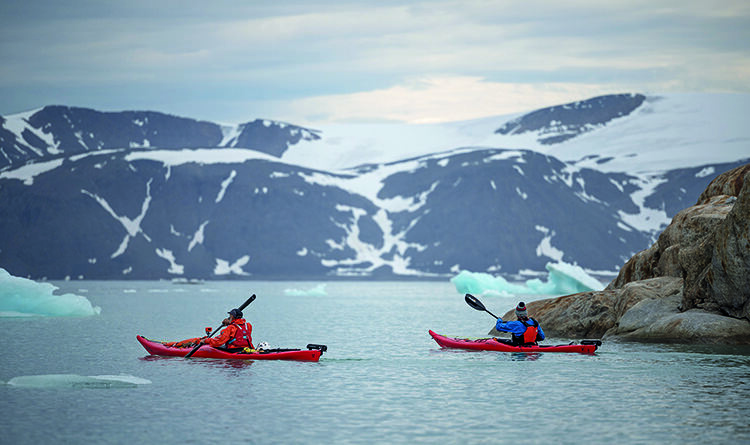
FIND OUT MORE
To discover more about what to see and do in Svalbard and East Greenland, go to visitsvalbard.com and eastgreenland.com. More on AE Expeditions cruises can be found at aexpeditions.co.uk.



